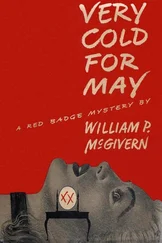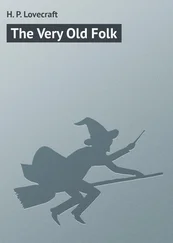“So this,” Molly said to me when she showed me the papers, “is what she was reading at the last. Gone back to the first.”
What happened with Malachi was hardly the first, but I do believe that that’s how Molly and others in the family thought of it. Molly wasn’t even born when it happened, nor were Julia and Tommy. Francis was seven, Sarah four, Chick one. Also Kathryn was pregnant with Peter when she went through the Malachi ordeal in 1887.
In the 1930s Peter had found his artistic vision in The Itinerant series, but then in subsequent years he foundered badly, dabbling in cityscapes, portraits, and in the new non-figurative, non-representational abstract mode, whose exercises in symbolic color and form, devoid of the human being, he could admire when done by others, but only loathe as pretentious failures when he created them himself.
In the weeks after Molly and I showed him the Malachi newspapers, Peter returned to figurative drawing, sketches of people closest to him, and felt instant strength, saw the abstract elements of these lives not as layers of scumbled space and violated line, but as the cruel specifics of eyes and jaw, the mournful declension of a lip line, the jaunty elevation of a leg. For years he had sketched the family, either from photographs or memory, or by cajoling his siblings (even Sarah one afternoon) into modeling for him. He never showed any of these works publicly, though he completed a dozen or more paintings from four or five score of sketches. Perhaps he was waiting for the moment when the visual reunion of his kin would make exhibitional sense.
That came to pass when the family, as he saw it, osmosed its way into his Malachi Suite , that manic outpouring of genius (I give him no less) that eventually drew me, and even Giselle, into its remarkable vortex. He sketched with a passion and painted with a fury that bespoke his fear of time, his full awareness that he had so little of it left in which to complete this now obsessive work. But he also painted with a sure hand, all errors deemed fortuitous and made part of the painting. His brush never wavered, these works of pain and poignancy stroked into existence with swiftness, certainty, and a realism that arrested the eyes of the beholder, held them fast.
In early childhood Peter had heard the Malachi events spoken of in cryptic bits by his mother, later heard more from Francis, who was seven when it happened, and in time heard it garbled by street-corner wags who repeated the mocking rhyme:
If you happen to be a Neighbor,
If you happen to be a witch,
Stay the hell away from Malachi,
That loony son of a bitch.
When the story took him over, Peter moved out of portrait sketching into scenes of dynamic action and surreal drama that in their early stages emerged as homage to Goya’s Caprichos, Disparates , and Desastres de Guerra. But in his extended revelation of the Malachi-and-Lizzie tragedy (and mindful of Goya’s credo that the painter selected from the universe whatever seemed appropriate, that he chose features from many individuals and their acts, and combined them so ingeniously that he earned the title of inventor and not servile copyist), Peter imposed his own original vision on scandalous history, creating a body of work that owed only an invisible inspiration of Goya.
He reconstituted the faces and corpora of Lizzie and Malachi and others, the principal room and hearth of the McIlhenny three-room cottage, the rushing waters of the Staatskill that flowed past it, the dark foreboding of the sycamore grove where dwelled the Good Neighbors, as Crip Devlin arcanely called those binate creatures whose diabolical myths brought on that terrible night in June of 1887.
His first completed painting, The Dance , was of Lizzie by the sycamores, her bare legs and feet visible to mid-thigh in a forward step, or leap, or kick, her left hand hiking the hem of her skirt to free her legs for the dance. But is it a dance? In the background of the painting is the stand of trees that played such a major role in Lizzie’s life, and to the left of her looms a shadow of a man or perhaps it is a half-visible tree, in the dusky light. If it is a tree it is beckoning to Lizzie. If it is a man perhaps he is about to dance with her.
But is that a dance she is doing, or is it, as one who saw her there said of it, an invitation to her thighs?
In the painting it is a dance, and it is an invitation.
Why would Lizzie McIlhenny, a plain beauty of divine form and pale brown hair to the middle of her back, choose to dance with a tree, or a shadow, or a man (if man it ever was or could be) at the edge of a meadow, just as a summer night began its starry course? Aged twenty-six, married five years to Malachi McIlhenny, a man of formidable girth whose chief skill was his strength, a man of ill luck and no prospects, Lizzie (née Elizabeth Cronin) had within her the spirit of a sensuous bird.
Malachi imposed no limits of space on their marriage, and so she came and went like a woman without a husband, dutiful to their childless home, ever faithful to Malachi and, when the bad luck came to him, his canny helpmate: first trapping yellow birds in the meadow and selling them to friends for fifty cents each, but leaving that when she found that fashioning rag birds out of colored cloth, yarn, thread, feathers, and quills was far more profitable; that she could sell them for a dollar, or two, depending on their size and beauty, to the John G. Myers Dry-Goods and Fancy-Goods Store, which, in turn, would sell them for four and five dollars as fast as Lizzie could make them.
At the end of a week in early June she made and sold sixteen birds, each of a different hue, and earned twenty-seven dollars, more money than Malachi had ever earned from wages in any two weeks, sometimes three. The money so excited Lizzie that when crossing the meadow on her way home from the store she kicked off her shoes, threw herself into the air, and into the wind, danced until breath left her, and then collapsed into the tall grass at the edge of the sycamore grove, a breathless victim of jubilation.
When she regained her breath and sat up, brushing bits of grass from her eyelashes, she thought she saw a man’s form in the shadowy interior of the grove, saw him reach his hand toward her, as if to help her stand. Perhaps it was only the rustling of the leaves, or the sibilance of the night wind, but Lizzie thought she heard the words “the force of a gray horse,” or so it was later said of her. Then, when she pulled herself erect, she was gripping not the hand of a man but the low-growing branch of a sycamore.
Malachi’s troubles crystallized in a new way when he lost his only cow to a Swedish cardsharp named Lindqvist, a recently arrived lumber handler who joined the regular stud-poker game at Black Jack McCall’s Lumber District Saloon, and who bested Malachi in a game that saw jacks fall before kings. Lindqvist came to the cow shed behind Malachi’s cottage and, with notable lack of regret, led Malachi’s only cow into a territorial future beyond the reach of all McIlhennys.
The lost cow seemed to confirm to Malachi that his life would always be a tissue of misfortune. At the urgings of his older brother, Matty, who had come to Albany in 1868 and found work on a lumber barge, Malachi, age seventeen, had sold all that the family owned and left Ireland in 1870 with his ten-year-old sister, Kathryn, and their ailing father, Eamon, who anticipated good health and prosperity in the New World. In Albany the three penniless greenhorns settled in with Matty at his Tivoli Hollow shanty on the edge of Arbor Hill. Within six months Matty was in jail on a seven-year sentence for beating a man to death in a saloon fight, within a year he was dead himself, cause officially unknown, the unofficial word being that a guard, brother of the man Matty killed, broke Matty’s head with an iron pipe when opportunity arose; and then, within two years, Eamon McIlhenny was dead at fifty-nine of ruined lungs. These dreadful events, coming so soon after the family’s arrival in the land of promise and plenty, seemed to forebode a dark baggage, a burden as fateful as the one the McIlhennys had tried to leave behind in County Monaghan.
Читать дальше












